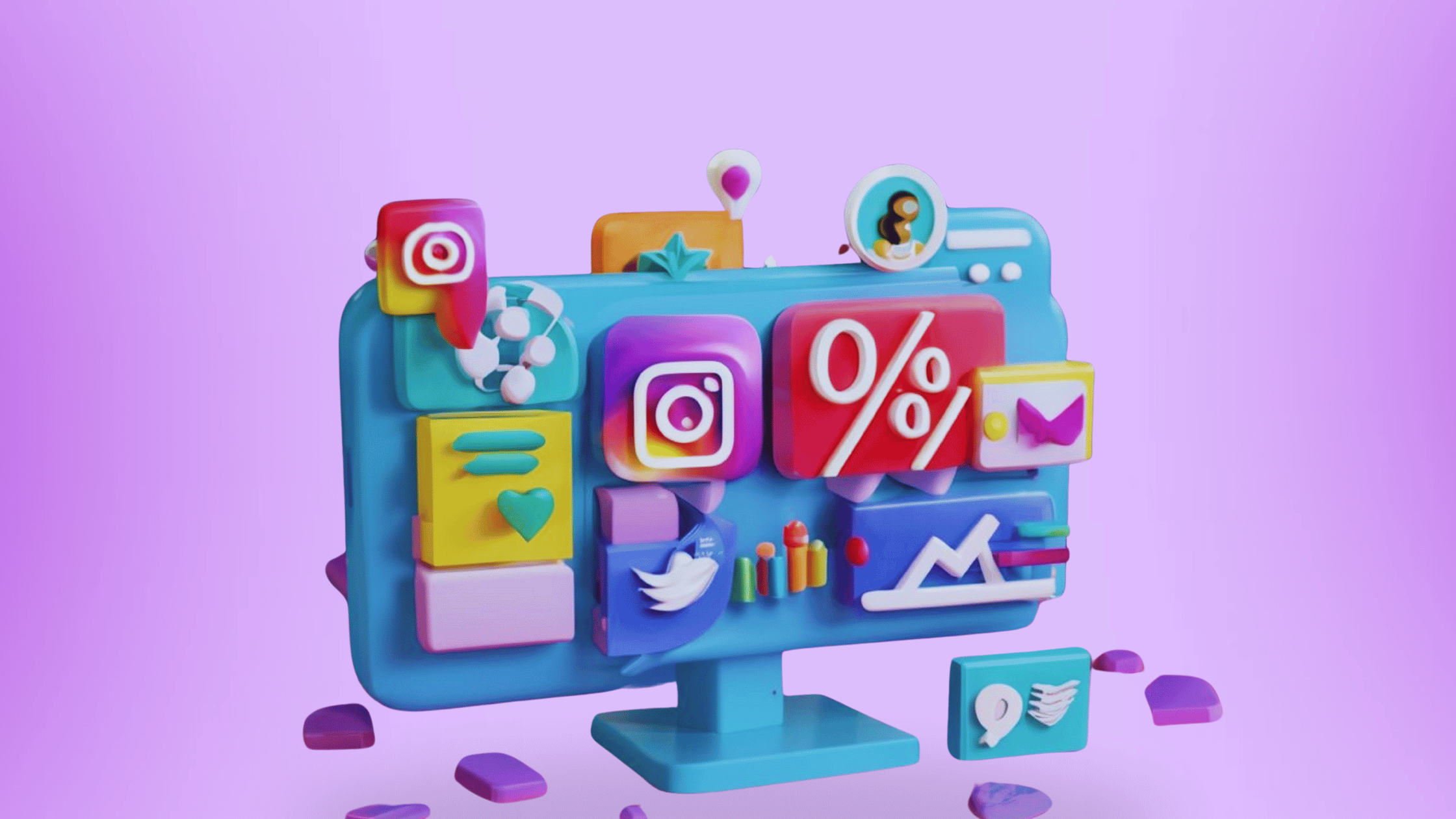With advancements in technology, we have seen exponential growth in Arguemented and Virtual reality and various brands are utilizing them to create outstanding marketing campaigns.
AR and VR have shown a significant shift in the branding and marketing domain, with a prediction of being the foundation for the future marketplace. Many leading global brands like IKEA, Facebook, Netflix, and Lenskart have already set foot on this vast, open virtual land. Here, we look at ten examples of AR and VR marketing done by brands.
Before we see how Augmented Reality (AR) and Virtual Reality (VR) are being utilized in the industry for marketing, let’s brush up on the basics of these marketing techniques. The significant difference between them stems from their applications.
Intro to Virtual Reality
In VR, the audience must wear a headset to immerse themselves in a three-dimensional, artificially created virtual environment. The VR technology is also capable of recognizing a variety of movements and further using this ability to translate them into activities for the virtual environment, indicating it can incorporate sights, movements, sounds, or gestures or be entirely digital. So VR offers interactive experiences to audiences using it, making it possible to come across places you’ve never visited or places you couldn’t have previously imagined! Earlier, it was assumed that smartphone-based VR would be widespread. Later, it became clear that our mobiles were better suited for Augmented Reality (AR) applications.
Intro to AR
AR results from placing computer-generated reality into the real world, like using a smartphone camera. No special equipment like headsets, controllers, or fixed locations would be necessary to use the same. So today, people can enjoy AR globally in the comfort of their homes, making the technology accessible to over 5 billion smartphone owners worldwide!
Now that we have covered the basics, let’s dive into how these media can be used in marketing to create a memorable customer experience. Let’s analyze how a few brands have used AR and VR to form better relationships with their target audience and customers and leave a lasting impression in their minds.
10 Examples of Brands Leverage AR & VR Marketing
1. Facebook’s AR Effect: Ready Player One
With all of the hype surrounding augmented reality, it’s easy to fall through the cracks of the modern-day feed. A top brand like Facebook used the growing sector of AR to add a layer of detail to our memories by bringing imagery and videos to life, bridging gaps in many aspects. Ready Player One was an interesting AR feature. The effect was similar to interactive games such as Pokemon GO. The viewer just needs to scan a poster or image to interact with it and learn more about it. With such growing technology and updated accessibility, Facebook has been one of the leading names in the social media sector for a while now.
2. USPS Holiday AR Campaign (2014)
The United States Postal Service (USPS) launched an AR-based application in 2014. Bringing the postal culture into the new world of habits, USPS created an application called USPS Holiday AR that can be used to create and send virtual and animated postal and holiday cards to your loved ones. USPS also launched a marketing program and transformed 156,251 postal offices around the nation into a festive-themed Christmas tree and gingerbread house using the application.
3. Sephora VR
Sephora is one of the leading cosmetics retailers in the world, and it has always been looking for new ways to engage and delight its customers. Its latest innovation is a virtual reality try-on experience that allows shoppers to see how specific products will look on their faces. The system uses a combination of facial recognition and AR to create a realistic 3D model of the user’s face. From there, shoppers can browse Sephora’s vast catalog of products and see how they would look with different colors, shades, and styles. So if you’re curious about that new lipstick shade but don’t want to commit to buying it right now, you’ll be able to try it on virtually at Sephora.
4. IKEA AR Application
IKEA has been a name well known by the masses regarding furniture. It has been in the spotlight for its brilliant marketing and branding strategies. Without skipping a beat, IKEA stepped into the augmented world to provide a better experience to its customers. The IKEA AR application was launched to help you design your home with the best IKEA products. Being one of the top names in the furniture market is not easy. Having a vast range of products on your list can be tiring and confusing for customers. The IKEA AR application helps reduce the hassle by bridging the gaps with real-time design. You may easily select products according to the space and dimensions of your room. This small but noteworthy feature alone makes shopping enjoyable!
5. Lowe’s VR
Lowe’s, the home improvement retailer, has been using VR to market its products since 2014. The company’s “Holoroom How-To” is a VR experience that allows users to see how a product works before they purchase it. The user is placed in a simulated home environment and given a VR headset. They can then select a product, such as a door or a window, and see how it looks and functions in their space.
6. Boursin VR
Boursin, a brand of gourmet cheese, has partnered with Sensorium, a company specializing in VR technology, to create an immersive VR experience that takes users on a virtual tour of the French countryside. The tour includes a stop at a traditional Boursin cheese factory, where users can learn about the process of making the cheese and see the picturesque surroundings. The experience also features a virtual tasting session, allowing users to sample different types of Boursin cheese.
7. Lenskart AR
Lenskart has made it possible for its customers to select from a range of glasses and try them on with their smartphones. This makes it easy for customers to choose from a wide range of options from the comfort of their homes until they find the one that perfectly matches their needs and aesthetics. This simple feature also created a distinct customer experience while solving complex problems straightforwardly.
8. Gucci Town VR
The Gucci Town VR experience is a fully immersive way to explore the world of Gucci. Visitors are transported to a fantastical version of Florence using cutting-edge VR technology, where they can explore the brand’s history and heritage. From the Palazzo Della Mercanzia to the Cathedral of Santa Maria del Fiore, every detail of the virtual city has been meticulously designed to reflect Gucci’s Florentine roots. There are even virtual versions of some of the brand’s most iconic products, including the GG Supreme bag and the Horsebit loafer. Whether you’re a die-hard fan of the brand or simply curious about what VR can offer, the Gucci Town experience is not to be missed.
9. WWF Free Rivers AR
The WWF Free Rivers app is a new augmented reality (AR) tool that allows users to explore the world’s rivers in a whole new way. By pointing their phone at a river, users can see real-time data on the river’s condition, including its water quality, flow rate, and pollution levels. The app also provides information on the river’s wildlife, including the types of fish that live there and the habitats they rely on. In addition, the app offers users the opportunity to take action to protect rivers, such as by donating to the WWF’s work or joining a local river cleanup. With the WWF Free Rivers app, people can explore rivers in a whole new way and learn about the importance of preserving these vital ecosystems.
10. Netflix Stranger Things AR
Over the past few years, Netflix has become known for its innovative marketing campaigns. One of the most recent examples is their use of Augmented Reality (AR) to promote the hit show Stranger Things. Netflix partnered with the AR platform Snap Lens Studio to launch the campaign. Together, they created a series of AR filters for Snapchat that allowed users to experience some of the show’s key elements. For example, one filter allowed users to step into the world of Upside Down, while another let them control one of the show’s iconic monsters. The campaign was hugely successful, with millions of people engaging with the filters. In addition to generating excitement for the new season, it also helped to raise awareness of AR technology and its potential uses.
Closing thoughts
AR and VR are still in their early days, but they offer a lot of potential for brands that want to get ahead of the curve. We’ve seen some great examples of how brands are using these technologies to create immersive experiences for their customers.
As the technologies advance, we will see more and more businesses jump on the AR and VR marketing bandwagon. We will see more immersive and engaging VR and AR marketing content being developed to attract customers.






























